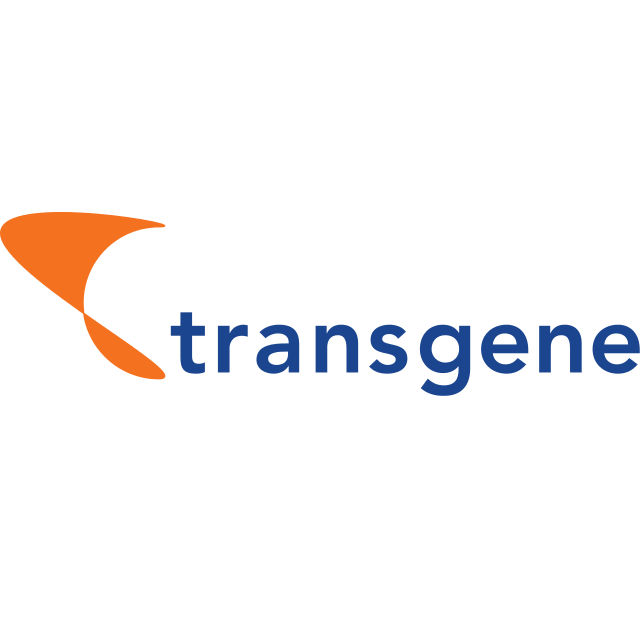预约演示
更新于:2025-05-07
CSF-2R x CTLA4
更新于:2025-05-07
关联
3
项与 CSF-2R x CTLA4 相关的药物作用机制 CSF-2R刺激剂 [+2] |
在研机构 |
非在研适应症- |
最高研发阶段临床2/3期 |
首次获批国家/地区- |
首次获批日期1800-01-20 |
作用机制 CSF-2R刺激剂 [+1] |
在研机构 |
原研机构 |
非在研适应症- |
最高研发阶段临床1/2期 |
首次获批国家/地区- |
首次获批日期1800-01-20 |
作用机制 CD28激动剂 [+2] |
在研适应症 |
非在研适应症- |
最高研发阶段临床1期 |
首次获批国家/地区- |
首次获批日期1800-01-20 |
6
项与 CSF-2R x CTLA4 相关的临床试验NCT06623110
A Phase 2 Study of Intralesional RP2 as Immunoprevention for High-Risk Oral Precancerous Disease (INTERCEPT)
The goal of this study is to understand the safety, tolerability, and potential efficacy of an injected immune therapy called RP2 to treat oral precancer conditions and prevent progression to an oral cancer.
The name of the study drug involved in this study is:
-RP2 (a genetically modified live Herpes Simplex V-1 strain)
The name of the study drug involved in this study is:
-RP2 (a genetically modified live Herpes Simplex V-1 strain)
开始日期2025-01-01 |
申办/合作机构 |
NCT06581406
A Randomized, Phase 2/3, Open-Label Study to Investigate the Efficacy and Safety of RP2 in Combination With Nivolumab Versus Ipilimumab in Combination With Nivolumab in Immune Checkpoint Inhibitor-Naïve Adult Patients With Metastatic Uveal Melanoma
The purpose of this study is to measure the clinical benefits of the combination of RP2 and nivolumab as compared with the combination of nivolumab and ipilimumab in patients with metastatic uveal melanoma who have not been treated with immune checkpoint inhibitor therapy.
开始日期2024-12-17 |
申办/合作机构 |
100 项与 CSF-2R x CTLA4 相关的临床结果
登录后查看更多信息
100 项与 CSF-2R x CTLA4 相关的转化医学
登录后查看更多信息
0 项与 CSF-2R x CTLA4 相关的专利(医药)
登录后查看更多信息
1
项与 CSF-2R x CTLA4 相关的文献(医药)2021-10-01·Journal of Periodontal Research2区 · 医学
Systemic administration of cytotoxic T lymphocyte‐associated antigen 4 (CTLA‐4)‐Ig abrogates alveolar bone resorption in induced periodontitis through inhibition of osteoclast differentiation and activation: An experimental investigation
2区 · 医学
Article
作者: Hisanaga, Rio ; Nakane, Saki ; Saito, Atsushi ; Imamura, Kentaro ; Ishihara, Kazuyuki
58
项与 CSF-2R x CTLA4 相关的新闻(医药)2025-02-22
·医药速览
Human myeloid APCs(髓系抗原提呈细胞)和human PBMC(外周血单个核细胞)是免疫研究中常用的细胞群体,本文将介绍两者在来源、组成和功能方面的同与不同,以及在肿瘤免疫研究中的应用。
一、定义和来源
Human myeloid APCs(髓系抗原提呈细胞)
主要指来源于髓系的抗原提呈细胞,如单核细胞(monocytes)、树突状细胞(dendritic cells, DCs)和某些巨噬细胞(macrophages)。
这些细胞在骨髓中产生,并在外周组织(如血液、脾脏和淋巴结)中发挥抗原提呈作用。
主要负责摄取、加工和提呈抗原,以激活T细胞。
Human PBMC(外周血单个核细胞)
是指从外周血液中分离出的所有单个核细胞,包括髓系和淋巴系细胞。
主要由淋巴细胞(T细胞、B细胞、NK细胞)、单核细胞(monocytes)和少量DCs组成。
PBMC可以通过密度梯度离心(如Ficoll分离法)从全血中获得。
二、组成成分
三、主要功能
Human myeloid APCs
主要功能是抗原提呈,激活T细胞免疫反应。
参与固有免疫(如吞噬病原体、产生细胞因子)。
髓系DCs在适应性免疫中起关键作用,可促进T细胞极化(Th1、Th2等)。
Human PBMC
包含多种免疫细胞,功能更广泛,包括适应性免疫(T/B细胞)和固有免疫(NK细胞、单核细胞)。
常用于体外免疫实验,如T细胞增殖实验、免疫抑制研究等。
PBMC中的单核细胞可以在体外诱导分化成树突状细胞或巨噬细胞。
四、细胞分离方法
Myeloid APCs
可以从PBMC中进一步富集,如使用CD14+磁珠分选单核细胞(单核来源的DC和巨噬细胞的前体)。
也可以通过CD1c、CD141等表面标志物分选不同亚型的DC。
Human PBMC
通过Ficoll密度梯度离心法直接从外周血分离。
五、Human Myeloid APCs 在肿瘤免疫研究中的应用
(侧重于抗原提呈、T细胞激活、免疫调控)
1. 研究抗原提呈及T细胞活化
树突状细胞(DCs)和单核细胞可作为抗原提呈细胞(APCs),用于:
研究肿瘤抗原提呈效率,评估肿瘤相关抗原(TAA)如何被DCs处理并呈递给T细胞。
体外共培养T细胞,检测T细胞激活情况(如CD69、CD25表达,IFN-γ分泌)。
评估免疫检查点(如PD-L1、IDO1)在APCs上的表达,了解肿瘤如何抑制APCs功能。
2. DC疫苗研发
树突状细胞疫苗(DC-based vaccines):
从PBMC分离单核细胞(CD14+),诱导分化为成熟DCs(GM-CSF、IL-4刺激),然后加载肿瘤抗原(如肽、RNA、裂解物)。
评估DC疫苗激活T细胞的能力。
研究如何优化DCs(如TLR激动剂、佐剂)来提高抗原提呈效率。
3. 研究髓系来源的免疫抑制细胞(MDSCs)
髓系抑制性细胞(MDSCs)是一类在肿瘤微环境(TME)中抑制免疫的髓系细胞。
通过分选MDSCs(CD11b+CD33+HLA-DR⁻)来:
研究其抑制T细胞功能(如检测T细胞增殖、IFN-γ分泌)。
评估MDSCs如何通过Arginase-1、iNOS、ROS等分子诱导免疫抑制。
测试药物(如CSF-1R、IDO抑制剂)是否能逆转MDSCs的免疫抑制功能。
4. 研究巨噬细胞极化(M1/M2)
肿瘤相关巨噬细胞(TAMs)在TME中通常表现出M2表型,促进肿瘤进展。
实验应用:
通过GM-CSF/IL-4或M-CSF/IL-10诱导PBMC单核细胞分化为M1/M2巨噬细胞。
研究巨噬细胞在TME中的促炎(M1)或免疫抑制(M2)作用。
测试小分子、抗体、细胞因子如何改变M1/M2平衡(如阻断CSF-1R或TGF-β可减少M2巨噬细胞)。
六、Human PBMC 在肿瘤免疫研究中的应用
(侧重于T/B细胞功能、免疫检查点、细胞毒性)
1. 免疫检查点研究(PD-1/PD-L1,CTLA-4等)
PBMC中包含T细胞,可用于:
共培养系统:与肿瘤细胞共培养,检测T细胞功能(如CD8+ T细胞的IFN-γ分泌)。
免疫检查点抑制剂(ICIs)测试:加入PD-1、PD-L1或CTLA-4单抗,评估T细胞激活情况。
Treg功能研究:CD4+CD25+FOXP3+ Treg的比例及免疫抑制能力检测。
2. 细胞毒性实验(CTLs/NK 细胞杀伤肿瘤)
评估T细胞(CD8+)、NK细胞对肿瘤细胞的杀伤作用:
PBMC共培养肿瘤细胞,检测细胞毒性(LDH释放、Annexin V/PI染色)。
加入免疫激动剂(如IL-2、IL-15)增强NK/T细胞杀伤活性。
抗体依赖细胞毒性(ADCC)实验:PBMC(含NK细胞)+ 抗体 + 肿瘤细胞,评估抗体治疗效果。
3. T细胞功能研究(TCR激活、TILs研究)
肿瘤浸润T细胞(TILs)研究:PBMC与肿瘤细胞共培养,分析TILs功能。
CAR-T 研究:
从PBMC中富集CD3+ T细胞,转导CAR基因,培养CAR-T细胞。
体外共培养肿瘤细胞,检测CAR-T细胞的细胞毒性。
4. 评估疫苗/佐剂对免疫系统的影响
通过PBMC体外实验,检测新型疫苗或佐剂如何激活免疫细胞(DCs、T/B细胞)。
监测炎症因子(IL-2, IL-6, TNF-α)和T细胞增殖。
七、选择 Myeloid APCs 还是 PBMC?
参考文献:
Nature Reviews Cancer, 2016, 16, 447–462
Scientific Reports, 2022, 12, 19920
推荐阅读:
看透一个免疫过程:免疫细胞归巢immune cell homing
看透一个免疫过程:B细胞活化
看透一个免疫过程:T细胞活化
看透一次完整免疫应答过程
推荐合集链接:看透免疫 | 糖-免疫 | 抗体偶联万物
糖科学中的氟代修饰 | 糖苷化中间体详解 | 抗体糖基化改造
商务合作 | 投稿 | 转载开白 联系微信ID:wxyLLLD
来源标记有误或涉及侵权,请原创联系后台删除;
欢迎个人转发分享;
其他任何媒体、网站如需转载或引用本内容须获得授权且在醒目位置注明“转自Glyco-Immunology"
©2020Glyco-Immunology保留所有权利
往期链接
“小小疫苗”养成记 | 医药公司管线盘点
人人学懂免疫学| 人人学懂免疫学(语音版)
综述文章解读 | 文献略读 | 医学科普|医药前沿笔记
PROTAC技术| 抗体药物| 抗体药物偶联-ADC
核酸疫苗 | CAR技术| 化学生物学
温馨提示
医药速览公众号目前已经有近12个交流群(好学,有趣且奔波于医药圈人才聚集于此)。进群加作者微信(yiyaoxueshu666)或者扫描公众号二维码添加作者,备注“姓名/昵称-企业/高校-具体研究领域/专业”,此群仅为科研交流群,非诚勿扰。
简单操作即可星标⭐️医药速览,第一时间收到我们的推送
①点击标题下方“医药速览”
②至右上角“...” ③点击“设为星标
疫苗免疫疗法临床研究细胞疗法
2025-01-22
·药明康德
▎药明康德内容团队编辑
Replimune Group今日宣布,美国FDA已受理RP1(vusolimogene oderparepvec)与抗PD-1抗体nivolumab联用,治疗晚期黑色素瘤患者的生物制品许可申请(BLA),FDA同时授予该BLA优先审评资格,预计在2025年7月22日前完成审评。
RP1是一款基于单纯疱疹病毒(HSV)的溶瘤病毒免疫疗法。它同时表达GALV-GP R-蛋白和粒细胞巨噬细胞集落刺激因子(GM-CSF),旨在增强肿瘤杀伤效力,癌细胞死亡的免疫原性,并激活全身性的抗肿瘤免疫反应。RP1通过注射到浅表和/或深层/内脏肿瘤中来治疗患者。它曾经获得FDA授予的突破性疗法认定。
该BLA的支持数据来源于IGNYTE试验的主要分析结果,该试验评估了RP1联合nivolumab治疗黑色素瘤患者的疗效。这些患者曾接受过PD-1靶向疗法治疗后疾病出现进展。在2024年第39届癌症免疫治疗学会年会(SITC 2024)中公布的结果显示,约三分之一的患者获得确认缓解。根据FDA要求的RECIST v1.1标准评估,患者的总缓解率(ORR)为32.9%。根据修正RECIST评估方案(mRECIST)v1.1评估的完全缓解(CR)率为15%。在既往接受过抗PD-1和抗CTLA-4疗法的患者中,ORR为27.7%;而在对抗PD-1初始耐药的患者中,ORR为35.9%。患者的中位缓解持续时间(DOR)为21.6个月。
目前,验证性3期临床试验IGNYTE-3正在进行中,评估RP1联合nivolumab治疗晚期黑色素瘤患者的疗效,这些患者包括在抗PD-1和抗CTLA-4抗体治疗后病情进展的患者,或不适合接受抗CTLA-4抗体治疗的患者。
黑色素瘤是常见皮肤癌之一,仅在美国,2024年估计约有10万例新发病例和8000例患者因此死亡。标准治疗方案包括使用免疫检查点抑制剂治疗,但约有一半患者对治疗无应答或在治疗后病情进展。对于免疫检查点抑制剂治疗失败的患者,可选的治疗方案非常有限,且没有可用的标准治疗方案。
▲欲了解更多前沿技术在生物医药产业中的应用,请长按扫描上方二维码,即可访问“药明直播间”,观看相关话题的直播讨论与精彩回放
参考资料:
[1] Replimune Announces Biologics License Application Acceptance and Priority Review for RP1 for the Treatment of Advanced Melanoma. Retrieved January 21, 2025, from https://www.globenewswire.com/news-release/2025/01/21/3012616/0/en/Replimune-Announces-Biologics-License-Application-Acceptance-and-Priority-Review-for-RP1-for-the-Treatment-of-Advanced-Melanoma.html
免责声明:药明康德内容团队专注介绍全球生物医药健康研究进展。本文仅作信息交流之目的,文中观点不代表药明康德立场,亦不代表药明康德支持或反对文中观点。本文也不是治疗方案推荐。如需获得治疗方案指导,请前往正规医院就诊。
版权说明:本文来自药明康德内容团队,欢迎个人转发至朋友圈,谢绝媒体或机构未经授权以任何形式转载至其他平台。转载授权请在「药明康德」微信公众号回复“转载”,获取转载须知。
分享,点赞,在看,聚焦全球生物医药健康创新
优先审批临床3期免疫疗法突破性疗法临床结果
2025-01-21
PDUFA action date of July 22, 2025, with priority reviewWOBURN, Mass., Jan. 21, 2025 (GLOBE NEWSWIRE) -- Replimune Group, Inc. (NASDAQ: REPL), a clinical stage biotechnology company pioneering the development of novel oncolytic immunotherapies, today announced that the U.S. Food and Drug Administration (FDA) has accepted the Biologics License Application (BLA) for RP1 (vusolimogene oderparepvec) in combination with nivolumab for patients with advanced melanoma. The FDA granted the BLA Priority Review with a Prescription Drug User Fee Act (PDUFA) action date of July 22, 2025. The FDA also informed the Company that they are not currently planning to hold an advisory committee meeting in relation to this application, and at this time have not identified any potential review issues. The BLA is supported by the primary analysis data of the IGNYTE trial, evaluating RP1 combined with nivolumab in patients with anti-PD-1 failed melanoma. A confirmatory Phase 3 trial, IGNYTE-3, is currently underway with over 100 sites planned globally. “There are limited treatment options and a significant unmet need for patients with advanced melanoma who previously received an anti-PD-1 containing regimen,” said Sushil Patel, Ph.D., Chief Executive Officer, Replimune. “The BLA acceptance is an important milestone for Replimune, and we look forward to working closely with the FDA on the review of our application.” The FDA grants Priority Review to applications for medicines that, if approved, provide significant improvements in the safety or effectiveness of the treatment of a serious condition. Recently, Replimune received Breakthrough Therapy designation for RP1 in combination with nivolumab for the treatment of advanced melanoma, based on the safety and clinical activity observed in the anti-PD-1 failed melanoma cohort of the IGNYTE clinical trial. The confirmatory IGNYTE-3 trial is assessing RP1 in combination with nivolumab in patients with advanced melanoma who have progressed on anti-PD-1 and anti-CTLA-4 therapies or are ineligible for anti-CTLA-4 treatment. For more information, please visit https://replimune.com/clinical-trials/ignyte-3/. About MelanomaMelanoma is the fifth most common cancer, with approximately 100,000 new cases and 8,000 deaths estimated in the U.S. in 2024.i Standard of care therapy includes treatment with immune checkpoint blockade, to which approximately half of patients will not respond or will progress after treatment. Options are limited after immune checkpoint blockade therapy, with no standard of care available to patients. About RP1RP1 (vusolimogene oderparepvec) is Replimune’s lead product candidate and is based on a proprietary strain of herpes simplex virus engineered and genetically armed with a fusogenic protein (GALV-GP R-) and GM-CSF, intended to maximize tumor killing potency, the immunogenicity of tumor cell death, and the activation of a systemic anti-tumor immune response. About Replimune Replimune Group, Inc., headquartered in Woburn, MA, was founded in 2015 with the mission to transform cancer treatment by pioneering the development of novel oncolytic immunotherapies. Replimune’s proprietary RPx platform is based on a potent HSV-1 backbone intended to maximize immunogenic cell death and the induction of a systemic anti-tumor immune response. The RPx platform is designed to have a unique dual local and systemic activity consisting of direct selective virus-mediated killing of the tumor resulting in the release of tumor derived antigens and altering of the tumor microenvironment to ignite a strong and durable systemic response. The RPx product candidates are expected to be synergistic with most established and experimental cancer treatment modalities, leading to the versatility to be developed alone or combined with a variety of other treatment options. For more information, please visit www.replimune.com. Forward Looking StatementsThis press release contains forward looking statements within the meaning of Section 27A of the Securities Act of 1933, as amended, and Section 21E of the Securities Exchange Act of 1934, as amended, including statements regarding the design and advancement of our clinical trials, the timing and sufficiency of our clinical trial outcomes to support potential approval of any of our product candidates, the FDA review process, review timing and outcome of our BLA, our goals to develop and commercialize our product candidates, patient enrollments in our existing and planned clinical trials and the timing thereof, and other statements identified by words such as “could,” “expects,” “intends,” “may,” “plans,” “potential,” “should,” “will,” “would,” or similar expressions and the negatives of those terms. Forward-looking statements are not promises or guarantees of future performance, and are subject to a variety of risks and uncertainties, many of which are beyond our control, and which could cause actual results to differ materially from those contemplated in such forward-looking statements. These factors include risks related to our limited operating history, our ability to generate positive clinical trial results for our product candidates, the costs and timing of operating our in-house manufacturing facility, the timing and scope of regulatory approvals, the availability of combination therapies needed to conduct our clinical trials, changes in laws and regulations to which we are subject, competitive pressures, our ability to identify additional product candidates, political and global macro factors including the impact of the coronavirus as a global pandemic and related public health issues and the Russian-Ukrainian and Israel-Hamas political and military conflicts, and other risks as may be detailed from time to time in our Annual Reports on Form 10-K and Quarterly Reports on Form 10-Q and other reports we file with the Securities and Exchange Commission. Our actual results could differ materially from the results described in or implied by such forward-looking statements. Forward-looking statements speak only as of the date hereof, and, except as required by law, we undertake no obligation to update or revise these forward-looking statements. Investor InquiriesChris BrinzeyICR Healthcare339.970.2843chris.brinzey@icrhealthcare.com Media InquiriesArleen GoldenbergReplimune917.548.1582media@replimune.com
i American Cancer Society. “Cancer Facts and Figures 2024”. Atlanta: American Cancer Society; 2024.
临床3期免疫疗法优先审批突破性疗法
分析
对领域进行一次全面的分析。
登录
或

生物医药百科问答
全新生物医药AI Agent 覆盖科研全链路,让突破性发现快人一步
立即开始免费试用!
智慧芽新药情报库是智慧芽专为生命科学人士构建的基于AI的创新药情报平台,助您全方位提升您的研发与决策效率。
立即开始数据试用!
智慧芽新药库数据也通过智慧芽数据服务平台,以API或者数据包形式对外开放,助您更加充分利用智慧芽新药情报信息。
生物序列数据库
生物药研发创新
免费使用
化学结构数据库
小分子化药研发创新
免费使用



